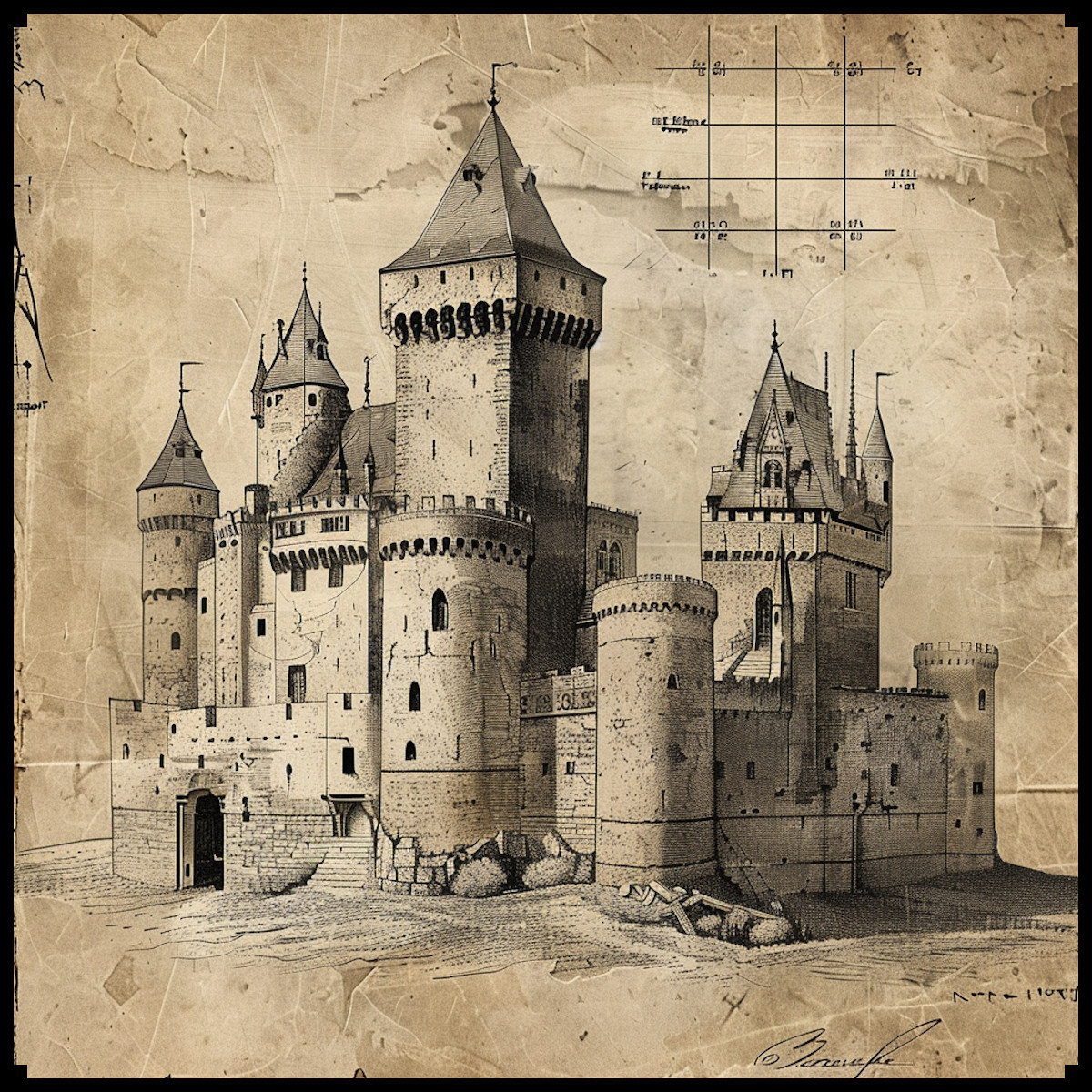
Maps have long served as windows to the imagination, guiding adventurers through uncharted territories, unlocking the secrets of forgotten realms, and unraveling the mysteries of fantastical worlds. Among the myriad genres that maps have adorned, none have captured the imagination quite like those of fantasy realms, where castles stand as bastions of power, fortresses of solitude, and symbols of majesty.
BUY AND DOWNLOAD The Vintage Fantasy & Medieval Castles – Assets Megapack here :
In the realm of fantasy cartography, there exists a rich tapestry of styles, each weaving its own spellbinding narrative. From the whimsical landscapes of fairy tales to the haunting vistas of dark fantasy, and from the futuristic vistas of science fantasy to the ancient allure of medieval realms, these maps serve as portals to realms both familiar and fantastical.
At the heart of this enchanting tapestry lies the Vintage Fantasy & Medieval Castles – Assets Megapack, a treasure trove of assets that pays homage to the timeless allure of fantasy cartography. Within its depths lie Medieval castles, Fantasy castles, Science fantasy castles, Fairy tale castles, Dark Fantasy Castles, Grimdark Castles, Elven castles, Green skin castles, Arabian nights castles, Forts, Fortresses, Citadels, Strongholds, and even Castles on beasts, all rendered in a style reminiscent of ancient maps.
To truly appreciate the significance of these representations, one must delve into the annals of history and fiction alike. Ancient maps, such as the Mappa Mundi of the Middle Ages or the whimsical cartography of J.R.R. Tolkien’s Middle-earth, offer glimpses into the evolution of fantasy cartography. These maps, adorned with intricate illustrations of castles and citadels, not only served practical navigational purposes but also served as vessels for cultural expression and artistic ingenuity.
In the annals of antiquity, the representation of castles on maps held profound significance, serving as beacons of power, symbols of authority, and guardians of realms. Take, for instance, the Hereford Mappa Mundi, a medieval world map dating back to the 13th century. Among its intricate illustrations of biblical scenes and mythical creatures, one can discern the imposing forms of castles dotting the landscape. These castles were not merely decorative embellishments; they represented centers of governance, military might, and cultural identity. Similarly, the Catalan Atlas, created in 1375 by the Majorcan cartographer Abraham Cresques, featured detailed depictions of fortified cities and castles, reflecting the geopolitical landscape of the time and emphasizing the strategic importance of these structures.
In the context of medieval Europe, castles played a pivotal role in shaping the socio-political landscape, serving as both defensive strongholds and symbols of feudal authority. From the imposing keeps of England to the picturesque châteaux of France, these fortifications stood as tangible manifestations of power, projecting the might and prestige of their owners. Moreover, castles often served as focal points for trade, commerce, and cultural exchange, fostering the growth of towns and cities around their protective walls. Thus, the representation of castles on ancient maps not only provided practical navigational aid but also offered insights into the complex web of alliances, rivalries, and aspirations that defined medieval society.
In the Vintage Fantasy & Medieval Castles – Assets Megapack, the spirit of ancient maps lives on, infused with a modern twist that pays homage to the rich legacy of fantasy cartography. From the majestic spires of medieval strongholds to the otherworldly allure of elven citadels, each asset is a testament to the enduring power of imagination and the timeless appeal of fantasy worlds.
In conclusion, the representation of castles on ancient maps serves as a testament to the enduring significance of these structures throughout history. From the towering fortresses of medieval Europe to the mythical citadels of fantastical realms, castles have transcended mere architectural marvels to become symbols of power, prestige, and imagination. As we journey through the rich tapestry of fantasy cartography, guided by the Vintage Fantasy & Medieval Castles – Assets Megapack, we are reminded of the timeless allure of castles and their integral role in shaping both the real and imaginary worlds.
Just as ancient cartographers meticulously charted the landscapes of their time, today’s creators of fantasy map assets continue this tradition, infusing their works with the same sense of wonder, exploration, and adventure. Through the intricate renderings of castles in all their myriad forms, we are invited to embark on epic quests, unravel mysteries, and forge our own tales of heroism and conquest. Thus, let us celebrate the magic of fantasy cartography, where every castle is a gateway to boundless realms of possibility, where imagination knows no bounds, and where the journey truly begins.



